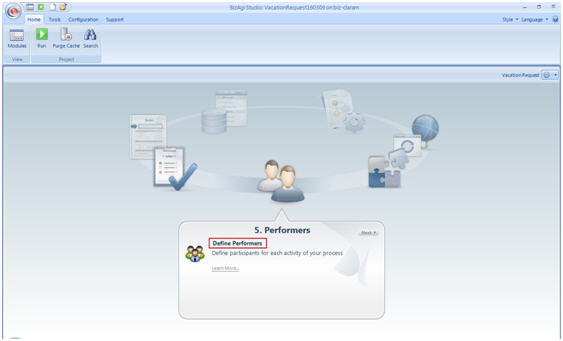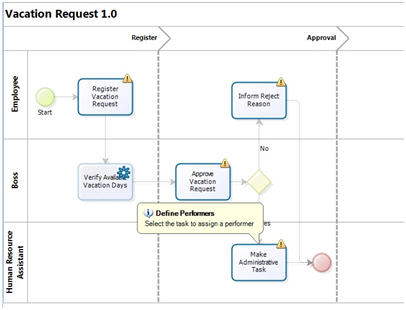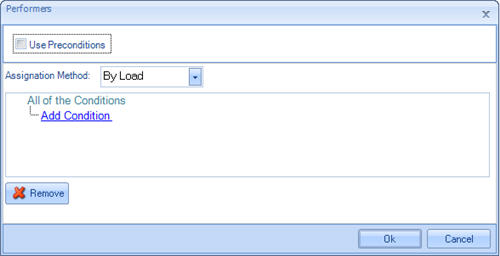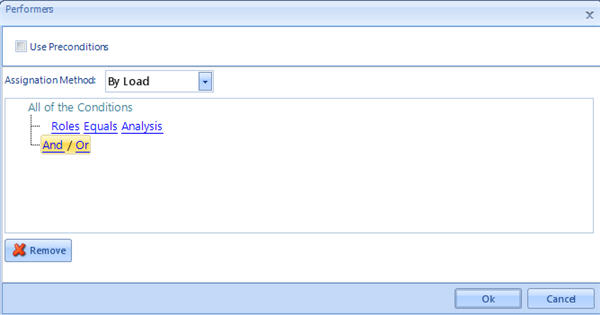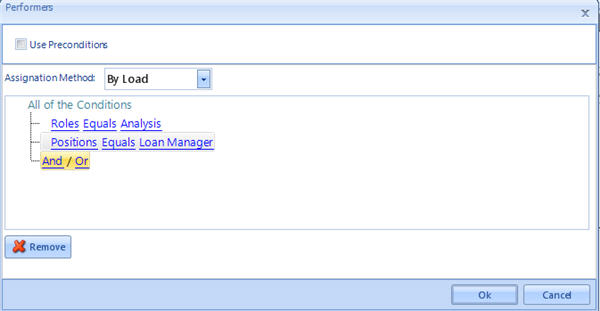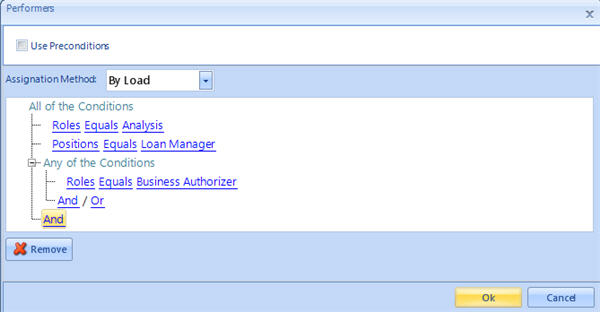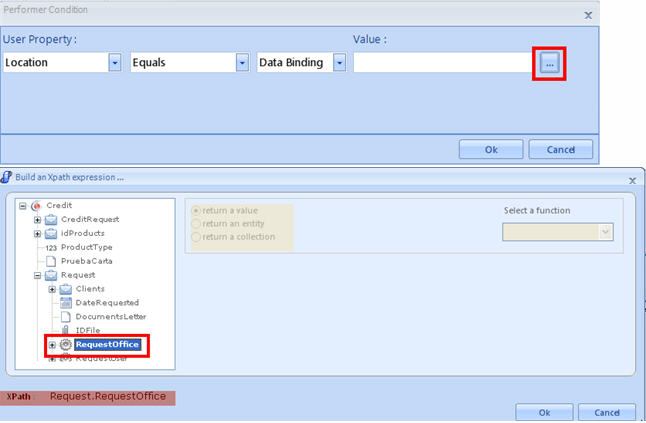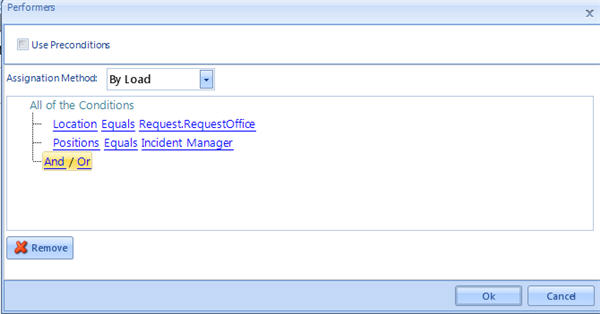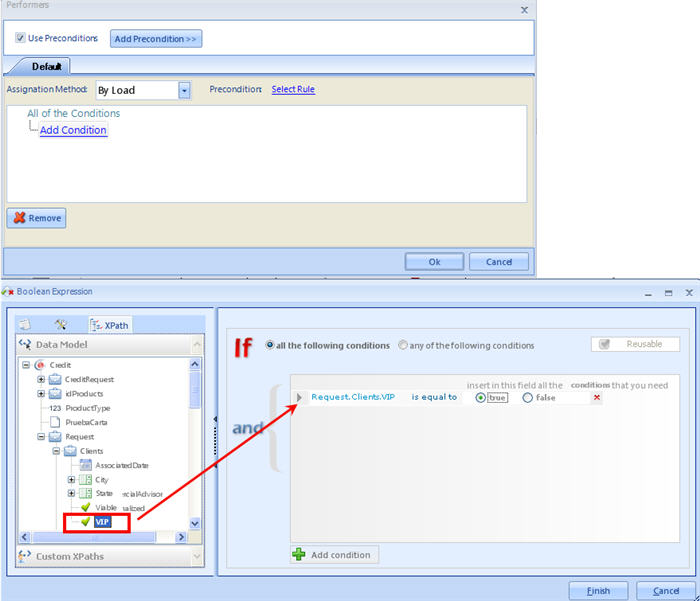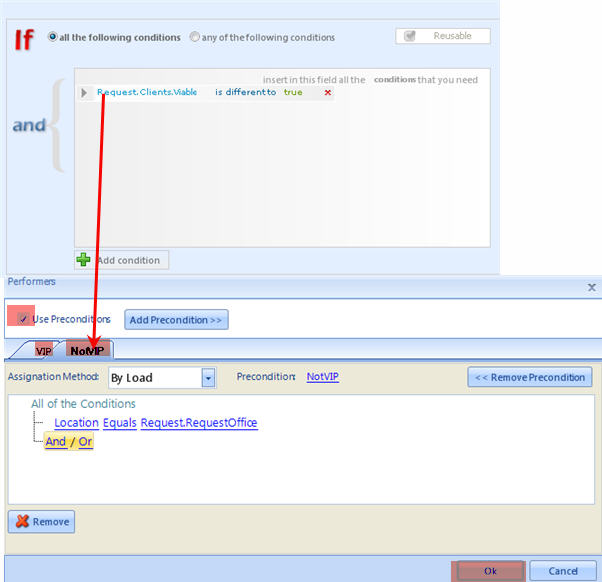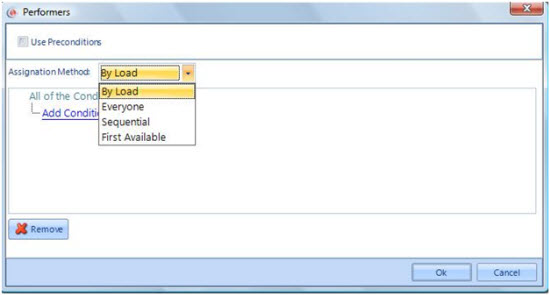How to assign activities to people
From Business Process Management, BPM and Workflow Automation Wiki | BizAgi BPMS
<keywords content="keywords">
assigning activities, activities to people, assign
</keywords>
Contents |
How to assign activities to people
Assignment Rules will be used by Bizagi's Engine to assign tasks.
If Bizagi cannot find a person who satisfies the criteria then the activity will be assigned to the person who has been defined in the Default Assignation User menu, in Bizagi's web application.
Assignment based on User Information
The following example illustrates how an Assignment can be established.
Suppose there is a Vacation Request process in which the "Administrative Task" must be executed by a person who has an "Analysis" Role.
User information is configured in Bizagi's web application in the Admin - Users menu which includes items such as Role, Position and Location.
- Related Topics: For more information on User Properties go to Administration or Organization.
1. To designate each activities' Performers click on Define Performers in the Process Wizard
Select each activity to define its Performers.
In the Process Wizard, the different activities that are available to define an assignation will be highlighted. The ones where the performers have not been defined have an exclamation mark.
2. Add a Condition
As soon as Performers is clicked, a new window will be displayed. Click on Add Condition.
3.Select the Criteria
From the drop down list under User Property select appropriate item, in this case Roles.
When the Entity Value button is selected, the available parameters for the User Property are shown. Select Analysis from the drop down menu.
The Assignment will be set up as shown below:
![]() Now follow the same process for approvals which will be handled by a person who has the Analysis Role AND the Position of Loan Manager.
Now follow the same process for approvals which will be handled by a person who has the Analysis Role AND the Position of Loan Manager.
![]() For the same process it would be possible to have a different Assignment for an Exception Approval Case, in which case a person with a higher role should be able to execute the activity. For this we will include an OR operator to establish that the Business Authorizer will be able to execute the activity.
For the same process it would be possible to have a different Assignment for an Exception Approval Case, in which case a person with a higher role should be able to execute the activity. For this we will include an OR operator to establish that the Business Authorizer will be able to execute the activity.
If the Role does not exist, click on the New button, then type the Role's name and click Save.
For the change to be effective in Bizagi, click on Ok.
Assignment based on User Information using Business Data
If the comparison value for the assignment is not part of any User Property but is included in the Business Data, a Data Binding must be used.
In this example, we have an incident to be resolved in the Loan Process. The person in charge would be the role "Incident Manager" that is also located in the office where the Client made his request. The Assignment would be:
- Related Topics: For more information on XPath Expressions go to How to Build XPath Expressions.
Advanced Assignment Rules
A special treatment is required for the loan disbursement to VIP Clients. This information will be saved in the Client and Request Entities. To indicate if a client is VIP a boolean function will be recorded in the Client Entity (Client.VIP). The location of the delivery office can be saved in either: Request.RequestOffice for NON-VIP Clients or Request.VIPOffice for VIP Clients.
1. Create a precondition Select from the Data Model, the VIP client
2. Add a condition
Select form the Data Model the VIP Office, to assign when the client is VIP
3. Create the second Precondition
Click on Add Precondition and select from the Data Model the condition where the client is Not VIP. Then, select from the Data Model the Request Office
Click Ok to Save the assignment rule
Assignment Settings
1. Type Column
Bizagi has three different types of Assignment Rules; "Everyone" is used by default.
![]() Everyone: Assignments are given to all users with the characteristics indicated in the Rule logic.
Everyone: Assignments are given to all users with the characteristics indicated in the Rule logic.
![]() By load: The task is assigned to the user with the least amount of work on the project.
By load: The task is assigned to the user with the least amount of work on the project.
![]() Sequential: The task is assigned one by one, that is, the tasks are assigned evenly among the group of people who meet the assignment criteria, regardless of their workload.
Sequential: The task is assigned one by one, that is, the tasks are assigned evenly among the group of people who meet the assignment criteria, regardless of their workload.
- Related Topics: For more information on Rule Type go to Assignation Method.
<comments />
